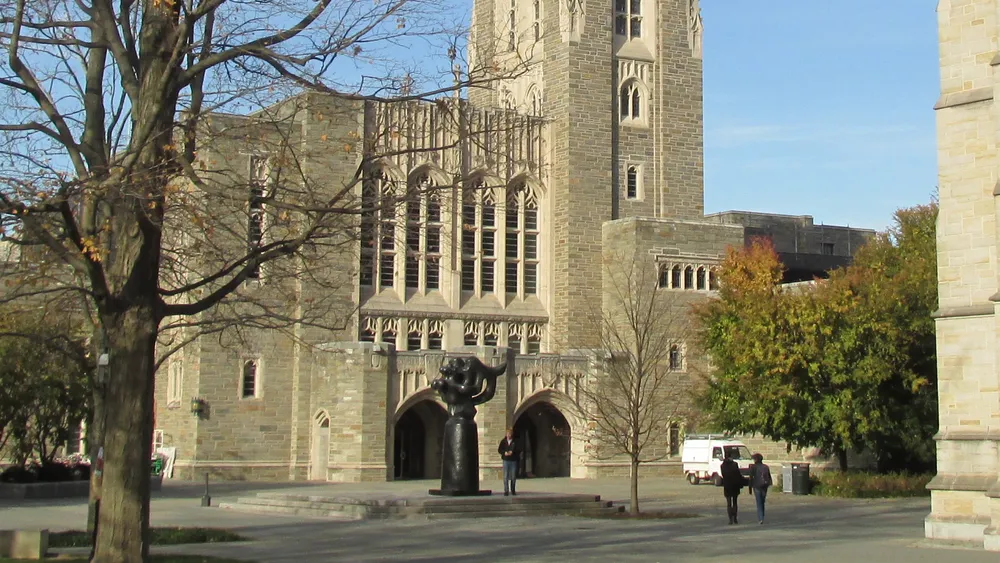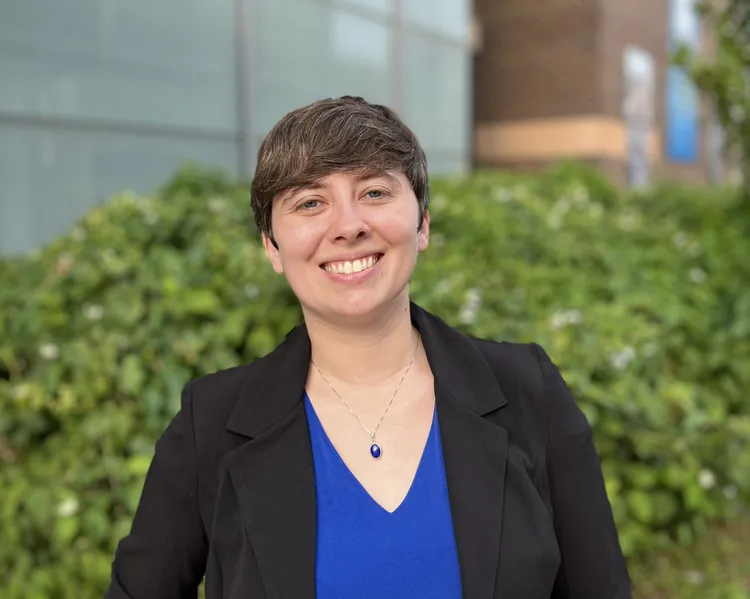Meet the CDH Postdocs: Christine Roughan
19 November 2023
Christine Roughan is a Postdoctoral Research Associate at the Center for Digital Humanities and Manuscript, Rare Book and Archive Studies.

This academic year, we welcomed three new postdocs to the Center for Digital Humanities. Check back over the next month to learn more about each of them.

Christine Roughan is a Postdoctoral Research Associate at the Center for Digital Humanities and Manuscript, Rare Book and Archive Studies.
Tell us a little about your academic interests.
I am interested in transmissions of knowledge: much of my work concerns the transmissions of mathematical and scientific texts around the ancient and medieval Mediterranean. Texts transmitted through the copying of manuscripts were hardly static, and my research focuses on how later scholars edited, translated, and otherwise contributed to the ancient works that had been handed down to them. I have also been working with digital methods for as long as I have been working with manuscript transmissions and I see these as quite intertwined in my own work: these methods facilitate addressing the multiplicity of the forms these texts take. Digital versions of these manuscript works, whether they are manually transcribed and marked up in TEI XML or automatically generated with handwritten text recognition (HTR) technology, are also themselves the latest in a long line of copies transmitting these works, and I am fascinated by them both for what they reveal of their source texts and for what new methods of engagement they make possible.
How did you get interested in digital humanities?
The start of it all was an email titled 'Homer and pizza'—this led me as an undergraduate to a meeting where I learned about the digital Homer Multitext project. I quickly got involved with the project, contributing to research with digitized manuscripts, creating digital editions with TEI XML, and linking machine-actionable transcriptions to regions of interest on the page image. From there I branched off into a senior project exploring digital approaches to mathematical texts (using the at the time recently digitized Archimedes Palimpsest) and then continued exploring further digital tools and methods from there! I was fascinated by how these methods opened up new doors for access and research with centuries-old material.
What project(s) do you plan to work on during your time as a postdoc?
My current research applies deep learning approaches to digitized manuscript materials. Presently there are some machine learning models available which have been trained to handle layout analysis and recognize regions of text on folio images, but these work best for simple layouts (e.g. a single column of text on the page). My work meanwhile brings me in contact with manuscripts where the text is accompanied by marginalia, by tables, by diagrams—a wealth of material beyond the main text itself. My project therefore is training models to work with these more complex layouts and is evaluating how effectively data augmentation methods can improve model performance in these contexts.
What have you enjoyed about working at the CDH so far?
The community at and around the CDH is a delight. I am really enjoying the opportunities for collaboration and also for learning about the tremendous range of digital projects and initiatives that are underway.
Do you collaborate with other Princeton units? If so, how?
My postdoctoral position is jointly with the Center for Digital Humanities and Princeton’s Manuscript, Rare Books, & Archive Studies (MARBAS) initiative. I am therefore involved with supporting several facets of research and pedagogy that concern premodern textual artifacts. For instance, this semester I have seen a lot of interest in applying HTR (handwritten text recognition) tools to manuscripts and so I am currently working with the CDH and MARBAS to prepare an introduction to the topic for interested members of the campus community.